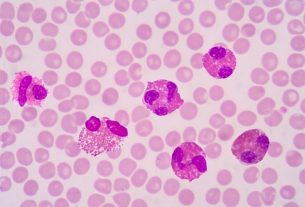The phosphorus test is carried out to monitor the amount of phosphorus in the blood and is requested by the doctor to monitor diseases that affect the kidneys or gastrointestinal tract.
Generally, the doctor requests this test along with other tests, such as calcium, parathyroid hormone or vitamin D levels, for example.
Phosphorus is a mineral that can be obtained through food and helps in the process of teeth and bone formation, the functioning of muscles and nerves and the supply of energy. See what phosphorus is for and where to find it.

How is done
The blood phosphorus test is done by collecting a small amount of blood from an artery in the arm. Collection must be done with the person fasting for at least 4 hours. Furthermore, it is important to inform the use of medications, such as contraceptives, antibiotics, such as isoniazid, or antihistamines, such as promethazine, for example, as they may interfere with the test results.
The blood collected is sent to the laboratory, where the phosphorus in the blood will be measured. Normally, the doctor requests a blood phosphorus test along with the dosage of calcium, vitamin D and PTH, as these are factors that affect the concentration of phosphorus in the blood. Learn more about the PTH exam.
The blood phosphorus test is usually recommended when there are altered levels of calcium in the blood, when there are suspicions of problems in the gastrointestinal or kidney tract, or when the person presents symptoms of hypocalcemia, such as cramps, sweating, weakness and tingling in the mouth, hands and feet. Understand what hypocalcemia is and what it can cause.
Reference values
Adequate levels of phosphorus in the blood of adults are between 2.5 and 4.5 mg/dL, values above or below must be investigated and the cause treated by the doctor.
However, the values vary according to age and the laboratory in which the exam was carried out, which may be:
What does high phosphorus mean?
Elevated phosphorus in the blood, also called hiperfosfatemiamay be due to:
- Hypoparathyroidismas PTH is found in low concentrations, the levels of calcium and phosphorus in the blood are not adequately regulated, as PTH is responsible for this regulation;
- Renal insufficiencysince the kidneys are responsible for eliminating excess phosphorus in the urine, thus accumulating in the blood;
- Use of supplements or medications that contain phosphate, such as laxatives, for example;
- Excess vitamin Dsince this micronutrient is responsible for promoting the absorption of phosphorus at the intestinal level and its reabsorption at the renal level;
- Diabetic ketoacidosiswhich can happen in people with type 1 diabetes;
Increased phosphorus in the blood can cause calcifications in the eyes, lungs, heart and blood vessels, increasing the risk of having a heart attack or heart attack. Furthermore, this mineral removes calcium from bones, making them more fragile and increasing the risk of fracture.
What does low phosphorus mean?
Phosphorus in low concentrations in the blood, also called hipofosfatemiacan happen due to:
- Vitamin D deficiencyas this vitamin helps the intestine and kidneys absorb phosphorus, so a deficiency can cause a decrease in phosphorus;
- Malabsorptionwhich can happen due to chronic diarrhea or intestinal surgery that makes nutrient absorption difficult;
- Chronic alcoholismas it can cause malnutrition and poor absorption of nutrients at the intestinal level;
- Primary or secondary hyperparathyroidismincreasing PTH levels and decreasing phosphorus concentration in the blood;
- Low dietary phosphorus intake for prolonged periods;
- Hypothyroidism and Cushing’s syndromeas there may be changes in the reabsorption of phosphorus in the body;
- Medication usesuch as aluminum and magnesium antacids, as they bind to ingested phosphorus, creating phosphate salts that the body cannot absorb.
Very low levels of phosphorus in children’s blood can interfere with bone growth, so it is important that children have a balanced diet that involves the consumption of foods rich in phosphorus, such as sardines, pumpkin seeds and almonds, for example. See other foods rich in phosphorus.
Bibliography
- STATPEARLS. Hypophosphatemia. Available at: <https://www.ncbi.nlm.nih.gov/books/NBK493172/>. Accessed on 7 Jul 2023
- MOUNT SINAI. Phosphorus blood test. Disponível em: <https://www.mountsinai.org/health-library/tests/phosphorus-blood-test#:~:text=The%20phosphorus%20blood%20test%20measures,tight%20vial%20or%20a%20syringe.>. Acesso em 06 jul 2023
- CLEVELAND CLINIC. Hyperphosphatemia. Disponível em: <https://my.clevelandclinic.org/health/diseases/24293-hyperphosphatemia>. Acesso em 06 jul 2023
- AMERICAN KIDNEY FUND. High phosphorus (hyperphosphatemia). Disponível em: <https://www.kidneyfund.org/living-kidney-disease/health-problems-caused-kidney-disease/high-phosphorus-hyperphosphatemia#:~:text=High%20phosphorus%2C%20also%20called%20hyperphosphatemia,2.5%20to%204.5%20mg%2FdL.>. Acesso em 06 jul 2023
- AKIMBEKOY, Nuraly; DIGEL, Ilya et al. Vitamin D and Phosphate Interactions in Health and Disease. Advances in Experimental Medicine and Biology. Vol.1362. 37-46, 2022

Sign up for our newsletter and stay up to date with exclusive news
that can transform your routine!
Warning: Undefined array key "title" in /home/storelat/public_html/wp-content/plugins/link-whisper-premium/templates/frontend/related-posts.php on line 12
Warning: Undefined array key "title_tag" in /home/storelat/public_html/wp-content/plugins/link-whisper-premium/templates/frontend/related-posts.php on line 13



